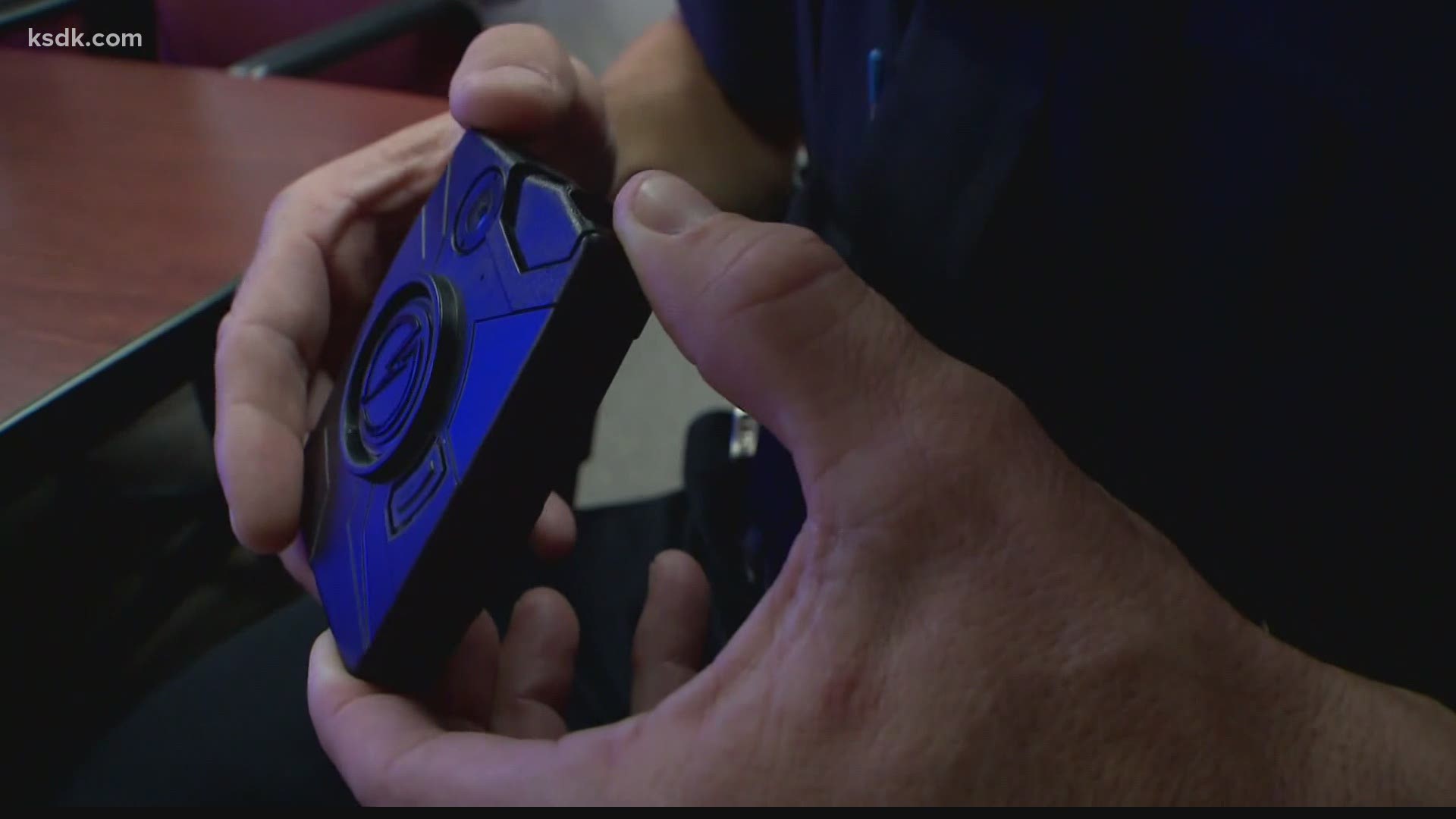It seems a seamstress of sorts is now standing in the way of equipping St. Louis police officers with body cameras on schedule.
As recently as an October Board of Estimate and Apportionment meeting, St. Louis Public Safety Director Jimmie Edwards said 800 officers would be wearing cameras as part of their uniforms by Nov. 30.
But, 5 On Your Side has learned only about 100 officers had them as of that deadline, and the city might have to spend more money on a temporary fix to roll out the rest of the cameras before the end of the year.
Meanwhile, critical incidents – including the recent wounding of a police officer from a shotgun blast – continue to happen without the watchful eye of a camera.
Edwards attributed the delay to Utility, the company the city paid $5 million for a five-year contract. It has slowed operations during the pandemic, and it is now taking about three weeks to sew pockets into 100 coats needed to house the cameras.
The company, Utility, issued a statement.
“Utility, Inc. has worked closely with the St. Louis Metropolitan Police Department to deliver upon the contract within the agreed upon timeline, including providing equipment, installation and training for the Utility body camera solution, vehicle communications system and evidence management system.
"The SLMPD contracted with a local vendor to produce new BodyWorn-outfitted uniforms, and each officer currently has a minimum of two of these uniforms. As part of the incremental roll-out process, we have worked with the agency to provide transferable pouches that can be used to temporarily equip winter coats with the Utility, Inc. camera technology.”
The city signed its contract with the camera company in June.
So, why wait until October to start asking officers for their coats?
Board of Alderman president and body camera supporter Lewis Reed said he’s trying to find out, as well as demanding a new timeline from the city’s Department of Public Safety on when the cameras will be in full use. He also added that he believes the manufacturer, Utility, should pay for the temporary fix because the city made its timeline known to the company when it signed the contract.
“This conversation didn’t start overnight, everyone is now on board and understands how important this is to our officers and community,” Reed said.
PREVIOUS COVERAGE: St. Louis approves contract for police body cameras
The cameras, which are about the size of an average smartphone, fit inside pockets inside a uniform’s shirt, vest, etc. The eye of the camera must not have any obstructions, and when officers put on their coats, it could block the camera’s view. That’s why pockets must be sewn into the front of the jackets to house the cameras.
And, with temperatures dropping, department leaders don’t want to take away police-issued coats for long periods of time to get them ready for the Body Worn Camera program, or BWC, Edwards wrote.
“I believe that we will have a temporary alternative fix soon that will allow the BWC to operate as planned,” he wrote. “This would get all BWCs on the street in a reasonable amount of time.”
Edwards did not know how much more money the temporary fix would cost.
Alderman Cara Spencer, who is also running for mayor, noted the city has been working toward a body camera program for years.
“I would get to the bottom of why the 800 cameras were not in service by their deadline,” she said. “As mayor, I would make certain to deliver on my promises.”
Mayoral candidate Dana Kelly said it was “disappointing to hear the police department has not met its own deadline for implementation of body cameras for 800 officers.”
“This is an initiative of tremendous significance to our city and we can't afford to make excuses,” Kelly wrote. “As mayor, I would make certain the appropriate people were in place to execute something of such importance, and I would ensure that if mistakes are made and deadlines are missed by either city employees or our outside contractors, they would be held accountable.”
Mayor Lyda Krewson’s spokesman Jacob Long called the body camera program “a long process.”
“We remain committed to seeing it through,” he said. “We support body cameras but it’s important to see this done the right way and it’s taking time.
“It is very involved, there is a lot of equipment that has to get retrofitted and it has to get done correctly, that’s what we’re going to focus on, but there are cameras on the street. It’s not like nothing’s happened. I know it’s taking a little bit longer, but I’m glad we discovered this now and it’s getting addressed and the cameras will be hitting the streets. People think you put a camera in a jacket and walk out the door. It’s very involved and very technical and when you have that many cameras, you have to make sure it’s done right and I’m glad we’re addressing the issue with the coats now so it doesn’t take any longer than it has to.”

